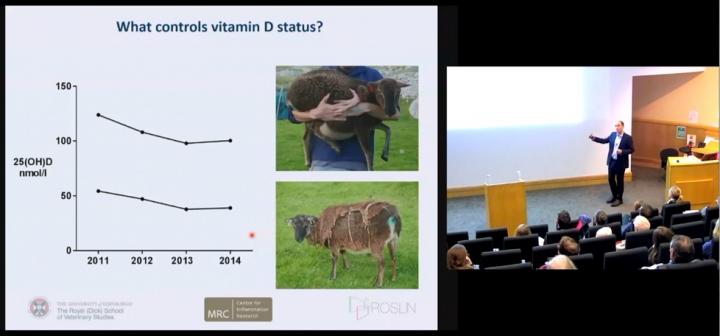Public Lecture on 'Vitamin D: hope or hype?'
November 2017: Richard Mellanby and Iris Mair delivered a public lecture on the role of Vitamin D in health and disease as part of the "Let’s talk about health" public lecture series run by the College of Medicine & Veterinary Medicine.

Interest in vitamin D has rapidly grown in recent years with numerous studies linking a lack of vitamin D to the development of a wide range of human conditions, from multiple sclerosis to cancer and hypertension. However, many researchers remain sceptical about the non-skeletal health benefits of vitamin D and believe the growing reputation of vitamin D as a panacea for many diseases is wildly over-stated.
Richard Mellanby, a veterinarian by training, gave an overview about how studies on dogs were pivotal in the discovery of vitamin D and how research on man's best friend continues to illuminate the ongoing debate of the importance of vitamin D on health beyond the skeleton. The latest research from the Vitamin D Animal Laboratory (VitDAL) was presented and discussed by Iris Mair, an immunologist, showing the remarkable effects vitamin D can have on shaping the immune system.
"Let's Talk About Health" is a series of public lectures which run annually from November through to March. It is aimed at senior school pupils interested in studying medicine, veterinary medicine or the life sciences at University as well as interested members of the general public and health professionals. The series allows scientists pioneering new research at the University of Edinburgh to share their latest ideas and discoveries with the public and provides attendees with the opportunity to advance their knowledge of health and what happens in disease.
A video transcript of the lecture can be found on the CIR website

